RESEARCH
1. Elucidation of glycan function in lymphocyte trafficking and acquired immunity
(1) Analysis using glycosyltransferase-deficient mice
(2) Analysis using novel anti-glycan antibodies
2. Development of a novel therspeutics against pollen allergy focusing on glycan modification of cedar pollen allergen
3. Elucidation of the moleculsr mechanisms underlying the development of colitis using glycosyltransferase-deficient mice
4. Elucidation of the molecular mechanisms of bacterial infection and infected host responses
5. Elucidation of antibiotic resistance mechanism
(1) Analysis using glycosyltransferase-deficient mice Our research group has developed sulfotransferase-deficient mice and found that a unique sulfated glycan expressed in high endothelial venule (HEV) plays an essential function for lymphocyte homing and acquired immune responses (Kawashima et al., Nat. Immunol., 2005). We also established HEV-specific heparan sulfate conditional knockout mice, demonstrating that heparan sulfate presents chemokines on HEV and has the function to promote lymphocyte homing (Tsuboi et al. , J. Immunol., 2013). Currently we are carrying out detailed functional analysis of glycans involved in lymphocyte homing and acquired immunity using various glycosyltransferase-deficient mice. These studies will lead to the development of a novel technology controlling lymphocyte dynamics and acquired immune response based on inhibition of glycan function.
(2) Analysis using novel anti-glycan antibodies
Glycans play a variety of roles in differentiation/development, immunity, canceration, protein quality control, etc. In recent years, glycans have attracted attention as a third life chain. To elucidate the function of glycans, it is important to clarify when, where, and what type of glycans are expressed in living organisms. For that purpose, anti-glycan antibodies specific for specific sugar structures are extremely useful, but their preparations are very difficult. Under these circumstances, we developed a novel method to generate anti-glycan antibodies and succeeded in the establishment of various highly specific anti-glycan antibodies (Hirakawa et al., J. Biol. Chem., 2010; Matsumura et al., ibid., 2015; Liu et al., Sci. Rep., 2023). Currently, using this methodology, we are establishing specific antibodies against various glycanss and establishing a methodology to artificially control lymphocyte dynamics and adaptive immune responses using those antibodies. In addition, we are conducting research aiming at the detection of disease biomarkers and their application to medical fields such as drug delivery using those anti-glycan antibodies.
It is estimated that about 25% of Japanese people currently suffer from hay fever. In particular, cedar pollinosis is the most common pollinosis in Japan, and its major allergen is a glycoprotein Cry j 1. We are focusing on the fact that Cry j 1 undergoes modification of unique glycans. We are investigating the function of glycans attached to Cry j 1 in the induction of allergic immune responses.
The colonic mucosa is exposed to numerous indigenous bacteria, heterologous antigens, and even pathogenic microorganisms on a daily basis. On this mucosal surface, it is known that colonic mucin, which forms the mucous layer, plays an important role as a mucosal barrier. However, the role of glycans on mucins is not fully understood. We have reported that sulfotransferase GlcNAc6ST-2 is strongly expressed in colon epithelial cells and functions to prevent colitis via sulfation of the carbohydrate moiety of colonic mucin (Tobisawa et al., J. Biol. Chem., 2010; Abo et al., JCI Insight, 2023). Currently, we are analyzing the molecular mechanism of the prevention of colitis using GlcNAc6ST-2-deficient mice whose colitis is exacerbated.
Bacterial infections are still a major factor that threatens our health today. However, the molecular mechanism of the pathogenicity of many bacteria is still enigmatic. Salmonella infection ranges from severe systemic infection to typhoid syndrome to minor enteritis. Salmonella's main pathogenic strategy is intracellular parasitism that escapes the phagocytic bactericidal mechanism of macrophages. Salmonella is considered to be phagocytosed by macrophages, then matured the phagosome into a unique organelle called SCV (Salmonella containing vacuole) to inhibit fusion with lysosome and proliferate in SCV, but its molecular mechanism is not fully elucidated. Therefore, we are trying to elucidate the molecular mechanism of intracellular parasites of Salmonella through research on the interaction between Salmonella's pathogenic factor and host function. We are also trying to elucidate the host immune response using infection models of various mutants that we constructed independently.
Antimicrobial agents are fundamental to the treatment of bacterial infections and we can not think of modern medicine without antibacterial agents. However, even today with the development of many effective antimicrobial agents, the infection has not been completely overcome. Resistant bacteria that have increased rapidly with the use of medicines has become a serious problem comparable to the emergence of new diseases. Our laboratory aims to elucidate the resistance mechanism of clinically isolated drug resistant bacteria in order to establish a molecular basis for the development of new antibacterial agent against drug resistant bacteria.
連絡先
〒260-0856
千葉県千葉市中央区亥鼻1-8-1
医薬系総合研究棟Ⅱ 5階
千葉大学大学院薬学研究院 免疫微生物学研究室
川島 博人
電話:043-226-2926
FAX:043-226-2927
E-mail: h-kawashima@chiba-u.jp
